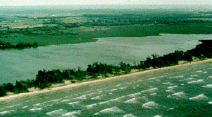 Plate 2a. Barrier-Beach Lagoon at Big Bay, Madeline Island, Apostle
Islands, WI. Barrier beach lagoons are frequently bounded by steep,
irregular topography in areas down-current from major sand-producing
features where deep embayments trap sands moved by longshore currents. The
irregular coastline along the till bluffs of the Bayfield Peninsula and
Apostle Islands features numerous well-developed lagoons. Here, the two
beaches reflect different lake levels and periods of barrier formation.
(Photo by Eric Epstein, 1996).
Plate 2a. Barrier-Beach Lagoon at Big Bay, Madeline Island, Apostle
Islands, WI. Barrier beach lagoons are frequently bounded by steep,
irregular topography in areas down-current from major sand-producing
features where deep embayments trap sands moved by longshore currents. The
irregular coastline along the till bluffs of the Bayfield Peninsula and
Apostle Islands features numerous well-developed lagoons. Here, the two
beaches reflect different lake levels and periods of barrier formation.
(Photo by Eric Epstein, 1996).
 Plate 2b. Barrier-Beach Lagoon at Rainbow Shores/Sandy Pond, NY.
Along the eastern end of Lake Ontario, predominant wind and water currents
have accumulated sands eroded from glacial moraines to the west, creating
a nearly continuous stretch of lagoons and wetlands between the barrier
and the irregular moraine upland to the east. (Photo by John Griebsch
1990).
Plate 2b. Barrier-Beach Lagoon at Rainbow Shores/Sandy Pond, NY.
Along the eastern end of Lake Ontario, predominant wind and water currents
have accumulated sands eroded from glacial moraines to the west, creating
a nearly continuous stretch of lagoons and wetlands between the barrier
and the irregular moraine upland to the east. (Photo by John Griebsch
1990).
 Plate 2c. Barrier-Beach Lagoon at Lakeview Pond Wildlife Management
Area, Jefferson Co., NY. The barrier beach reduces wind and wave
energies, allowing for the accumulation of fine sediments and the
development of submergent and emergent vegetation communities behind the
protective barrier. (Photo by D. Klein 1994).
Plate 2c. Barrier-Beach Lagoon at Lakeview Pond Wildlife Management
Area, Jefferson Co., NY. The barrier beach reduces wind and wave
energies, allowing for the accumulation of fine sediments and the
development of submergent and emergent vegetation communities behind the
protective barrier. (Photo by D. Klein 1994).

